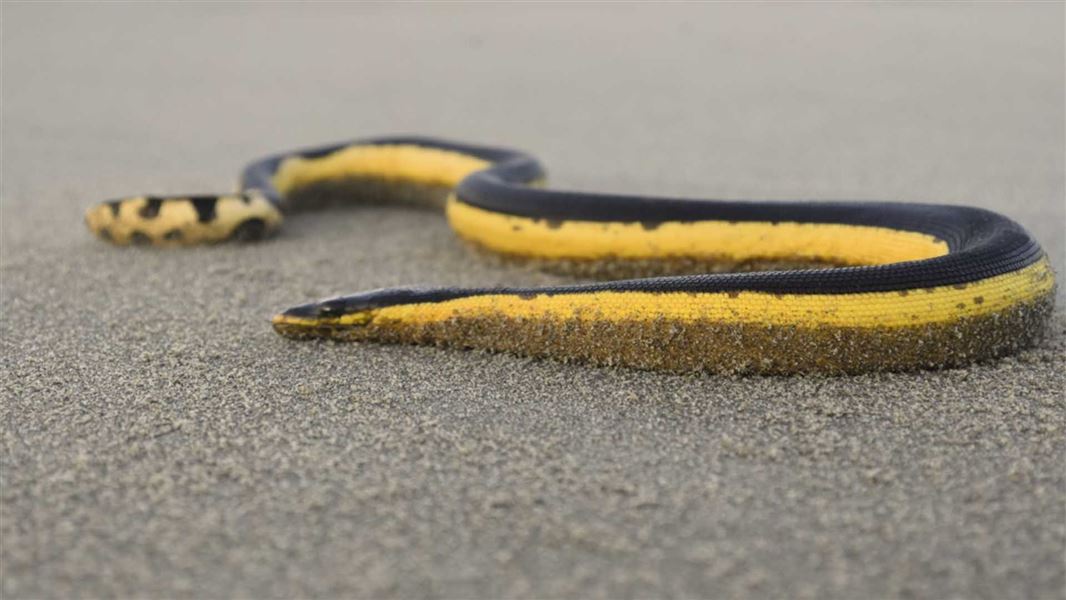More are likely to wash up on our beaches in future due to climate change, increasing storm events and water temperatures.
Sea snakes and kraits are protected under the Wildlife Act 1953. They are non-resident in New Zealand waters and arrive on ocean currents more by accident than design as the waters here are too cold for them to survive.
It is illegal to kill or harass a sea snake, or possess one – or part of one – without a Wildlife Authority.
Sea snakes and kraits are generally docile, unless disturbed. They are highly venomous, however there is no record of anyone in New Zealand being bitten.
If you find a sea snake or krait keep yourself (and any dogs) well away and immediately call 0800 DOC HOT for advice. Where possible, a DOC ranger will investigate.
If you are bitten by a venomous sea snake/krait seek medical attention immediately. The National Poisons Centre also offers a 24/7 service on 0800 POISON.
Report all sightings and strandings of sea snakes and kraits by:
- calling 0800 DOC HOT, or
- filling out an Amphibian & Reptile Distribution Scheme (ARDS) card.
- email: herpetofauna@doc.govt.nz and: turtles@doc.govt.nz
Yellow-bellied sea snakes
Around 12 yellow-bellied sea snakes are seen each year, mostly around the north east coast of the North Island, though they have been discovered as far south as Cook Strait.
Beach stranded yellow-bellied sea snakes that are still alive, are unwell and will not survive (usually they're hypothermic due to cold water temperatures). This species spends its entire life at sea, never coming ashore, and they breed in the warm tropic waters north of New Zealand.
They can dive up to 50 m for 3-4 hours, depending on the temperature of the water, and they feed on small fishes.
Sea kraits
Unlike sea snakes, sea kraits are semi-aquatic, meaning they spend part of their time on land sunbathing on sand or in trees. As 'ectotherms' they need warmth from the sun to regulate their body temperature. They also visit land to drink fresh water and lay their eggs. However, they don't breed on New Zealand's beaches because it’s too cold.
There are three species of sea kraits occasionally found in New Zealand waters:
• Yellow-lipped sea krait (Laticauda colubrina)
• Saint Giron’s sea krait (Laticauda saintgironsi), and;
• Brown-lipped sea krait (Laticauda laticaudata) – extremely rare.
Sea kraits are found abundantly in the reef systems around Papua New Guinea and New Caledonia, and their usual prey is eels.
A yellow-lipped sea krait found on Takapuna Beach in 2022 was rehabilitated and is on display at Auckland Zoo for educational and conservation advocacy purposes.
